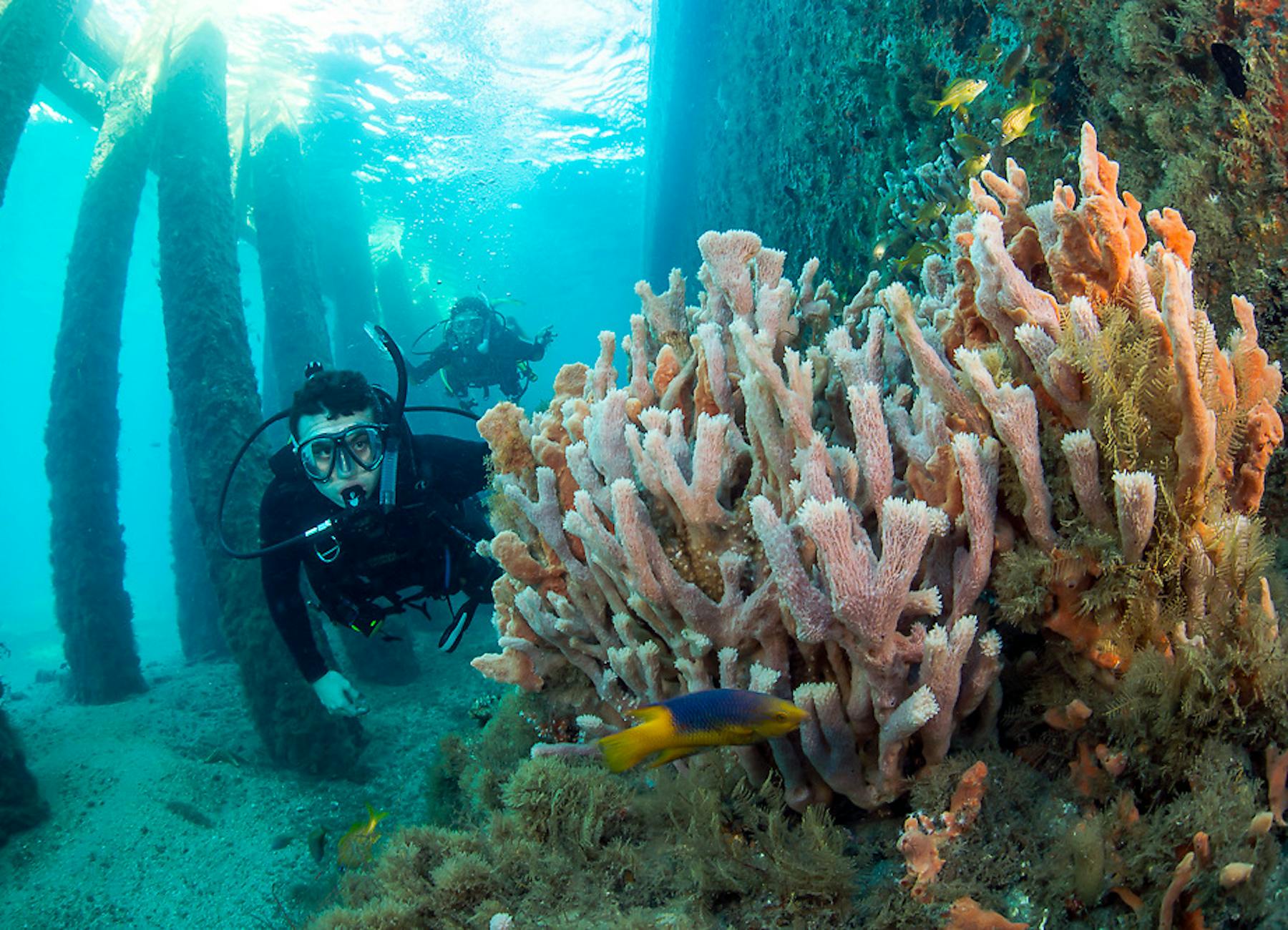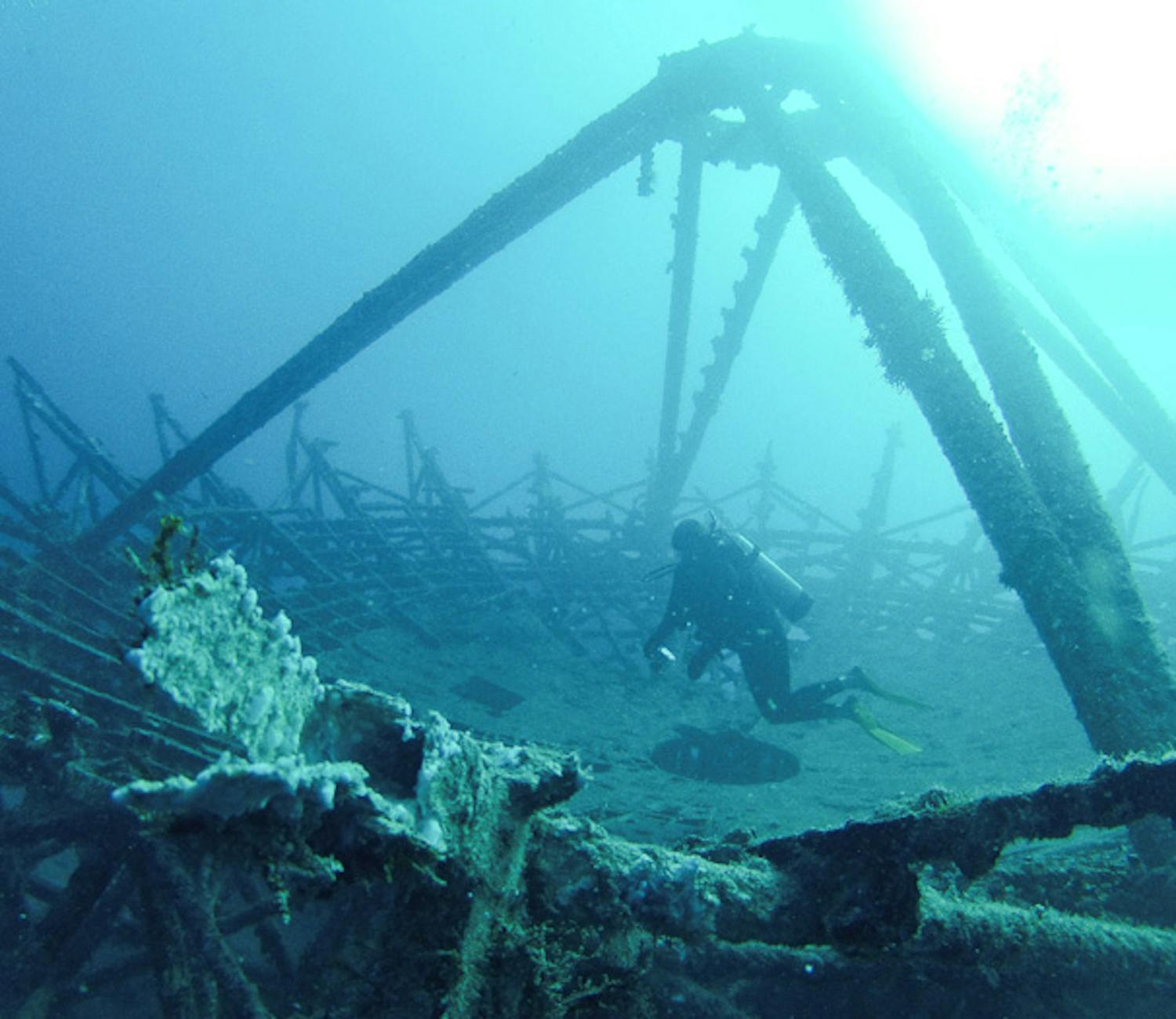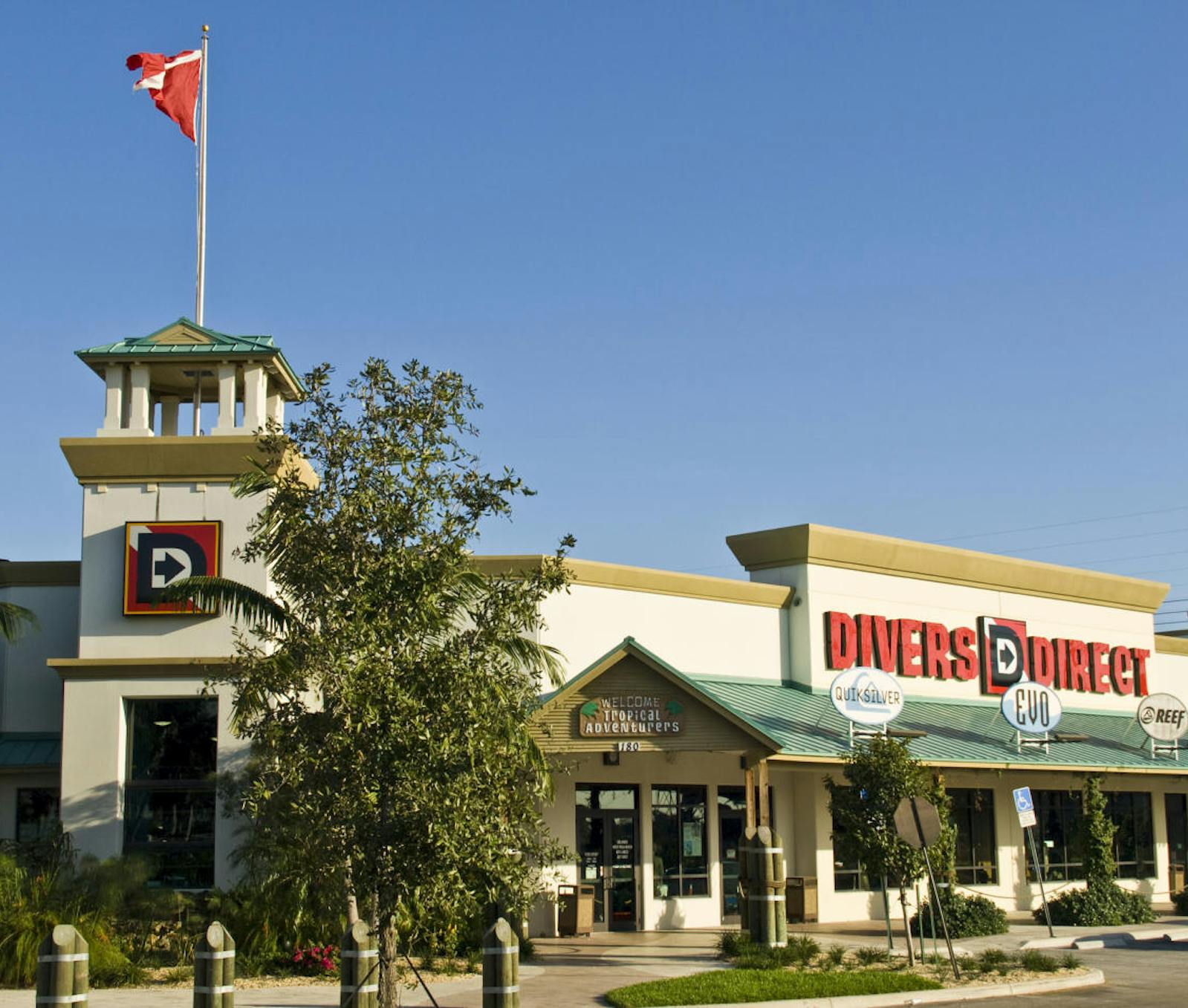Free Shipping on orders of $49+ | Signup for Direct Rewards
Free Shipping on orders of $49+ | Free Store Pickup | Signup for Direct Rewards
Free Shipping on orders of $49+ | Signup for Direct Rewards
Free Shipping on orders of $49+ | Free Store Pickup | Signup for Direct Rewards

Welcome to the final stop on our winter scuba diving in Florida adventure—South Florida. Maybe you’re not into being cold at all and all you want in the world is a warm place to explore where flip flops are still the general footwear and your teeth don’t chatter once you get out of the water. Don’t worry, friend, we got you.
Let me paint you a picture, Divers: The palm trees are swaying in the cool winter breeze along the South Florida shoreline. It’s only cool enough to add an euphoric reprieve from the hot sun bearing down. You wore that long sleeve shirt because, hey, it’s winter, but now you’re rolling up the sleeves as little beadlets of sweat start to form across your skin while you’re getting your dive gear ready to roll.
Not much has changed here temperature-wise. The air has dropped maybe ten degrees but we call it winter nonetheless. Here, we’re still sunbathing on the beach in bikinis and boardshorts and booking dive charters early so we make sure we get a spot on the boat—it is “busy season” here after all. The only significant change that you may notice as a diver in the winters of South Florida is a mild drop in the water temperature, less seaweed, and more animals. Just what the doctor ordered.
I, your beloved guide, got my scuba diving certification right here in South Florida, in Pompano Beach to be exact. It was January and the air was quite pleasant (quite pleasant for me is sunny and warm, but not too hot). I was shocked to find that our pool session was actually colder to experience than the open water portion of the certification–of course there’s nothing like nerves and adrenaline to keep you nice and toasty. I mean, it’s January. I had a 3/2mm wetsuit, boots, and opted not to wear gloves, which I later mildly regretted. It was the perfect combination of gear and had the wetsuit been any thicker, I might have been uncomfortable. Basically, what I’m saying here is that, based on personal experience, winter diving in South Florida is an absolute dream.

The Blue Heron Bridge in Palm Beach is an underwater photographer’s paradise. Seriously, there have been so many award winning photographs taken at this location and that’s because, well, everywhere you look there is awe-inspiring beauty! Not only is this a place where you can get some great pictures, but divers and snorkeling enthusiasts of all levels can enjoy this location. Its deepest point is just over 20 feet!
You can scuba dive and snorkel this location year round, but in the winter, you may find that the water is a bit calmer, a bit clearer, and just a tad cooler than a summer dive here.
Unlike our other suggested scuba diving spots in the two previous blogs, you might just find that there are more people here in the winter rather than the summer. Who wouldn’t want to escape the snow for a few days, weeks, or months and come hang out where the sun is still warm and the water is clear and inviting? The answer to that question is, “not many,” and the “many” make their way here for a more tropical flavor of winter life.
But along with the south-bound people also come the migratory animals escaping the colder waters. Sharks, jellyfish, manatees, and even whales and whale sharks make their way through the South Florida coastline around these months and we love to see them. Of course, you’re not going to see a whale shark in the 20 feet of intracoastal waterway that is the Blue Heron Bridge, but hey, this ain’t the only dive site on our list or in our area, so keep your hopes up and you eyes open for these majestic creatures. But what will you see at BHB, you ask?
Speaking of keeping your eyes open, if sea horses are on your bucket list of marine animals to see on a dive then you will very possibly, if not very likely, see one at this dive location. And starfish. And stingrays. And octopuses. And sea turtles, dolphins, and more fish that you or I could count!
Sounds amazing, right? It is! But we have more dives to dive, so let’s scuba dooba-doo on to the next dive site.
On your way out to the SS Copenhagen, you’ll pass by the famous Hillsboro Lighthouse as you make your way out to sea. Pulling up to the mooring buoy, you may just find yourself surprised at how close you still are to the shore. This dive site is only 3/4 of a nautical mile away from the Lauderdale-by-the-Sea shoreline. The SS Copenhagen was originally a transatlantic cargo ship. In 1898, the ship was on its way to Cuba from Pennsylvania, loaded with nearly 5,000 tons of coal, when it ran into a reef and got stranded off the coast of South Florida. It eventually sank completely some decades later after the Navy used the Copenhagen for target practice during World War II.
This artificial reef is now a favorite dive, snorkel, and spearfishing site in South Florida. Once you jump in the water and begin your descent, you’ll come across a plaque that offers some brief information about the SS Copenhagen. And, of course, it’s always fun to see a massive coral-coated anchor on your dives and you’ll swim right past one that’s bigger than you are. Because its deepest point is 32 feet, it is also appropriate for all levels of divers and other water enthusiasts. You’ll see large schools of fish swim by, varieties of stingrays, lobsters, eels, turtles, the occasional shark, and more!
Perhaps you’re hoping for more of a deep dive? Maybe you want to put your Advanced OW certification or wreck dive certification to use? Then let’s head on down to one of the most famous dive sites in Florida (and a Divers Direct favorite dive spot), the Spiegel Grove.
About 6 miles off the coast of Key Largo sits this massive artificial reef. The Spiegel Grove was supposed to be intentionally sunk as an artificial reef in 2002, but a few hours before the official sink, some volunteer workers dropped her 12-ton anchors and the ballast tanks began to flood, causing the crew to abandon ship as the Spiegel Grove sank upside down to the ocean floor (with the bow still bobbing just above the surface). Thanks to some pricey assistance (about $250,000), the ship was rolled over to its starboard side and divers flocked from miles around to explore the new wreck. When you visit this site now though, you’ll notice that it is standing quite upright. We can thank Hurricane Dennis (who helped for $0) in 2005 for the assist in setting things into their originally intended positions.
You can explore this site from anywhere around 65 feet to its deepest point at 135 feet. There are plenty of ways to dive into the interior of this vessel, but we only recommend entering the Spiegel Grove if you have a wreck diving certification. Goliath Grouper are a common find around this artificial reef, as well as barracuda, jacks, more than 100 species of smaller fish, and sharks.


Originally a troop transport vessel and a missile satellite tracking ship, the USS Vandenberg serviced the above sea-level world from the mid-1940s all the way until the early 2000s. Afterwards, the vessel would come to serve a new purpose—being an artificial reef off the coast of Key West. About 7 miles south from the coast of Key West to be exact-ish.
Although it is technically the deepest site on our list today with a max depth of 145 feet, the Vandenberg can be enjoyed by both novice and advanced divers since its tallest points are around 40 feet deep. This can sometimes be a challenging dive though. It is common for visibility to be somewhat low and currents to be rather strong, but a mindful diver can enjoy this wreck dive quite safely. Ten stories tall and 524 feet long, it will take more than one dive to explore this wreck’s entirety from one end to another.
Since it is just around the corner from the Spiegel, you’ll find just about the same animals here—barracudas, Goliath Grouper, angelfish, reef sharks, and perhaps even the unicorn we mentioned earlier, the whale shark.
Fun fact: It cost around $8.6 million dollars to prepare and sink the USS Vandenberg.
From Fort Lauderdale through Key Largo and all the way down to Key West, you can stock up on the gear you need for these incredible adventures at Divers Direct. So now that you know where to go, let’s cover what exactly you’ll need.
First of all, whether you’re diving through that underwater photographer’s paradise at the Blue Heron Bridge or searching for a whale shark during a deep dive in the Keys, you’ll need a camera to capture it all. If you’re looking to record your dive from start to finish to make sure you don’t miss a thing, we recommend grabbing a GoPro that you can hold on to or stick on your mask so you can go with the flow and not miss a thing. If you’re a more intentional photographer and want to capture the perfect shot as you swim along, grab yourself a SeaLife Micro Camera Set for collecting that award winning shot.
But what are we going to wear?! Well, as mentioned in my personal winter dive story earlier, a comfortable 3mm wetsuit ought to do the trick down here in South Florida waters. While you could probably get away with full foot fins here, we suggest open heel fins so that you can rock some 2mm dive boots for optimum comfort and warmth. And, of course, some gloves are ideal, not just for keeping warm but for protecting your hands against the unknown.

You’ve soaked in all this information like the cute little sea sponge that you are. Now it’s time to put it all to good use and dive, dive, dive.
While this is the end of our Winter Diving in Florida Series, we have new blogs, videos, and other cool content coming out regularly to support your scuba life. So check us out on Instagram, YouTube, Facebook, TikTok, and, of course, your trusty ol’ Divers Direct Blog Page. Tag us in your adventures and you may just find yourself on our page, you rockstar!
Can I dive the Spiegel Grove or USS Vandenberg with an Open Water Certification?
It is highly recommended, and even required by some dive charters, that you have an Advanced Open Water certification to participate in these dives. Be sure to call the local dive charters and check in with their requirements and recommendations regarding these dive sites.
What kinds of marine animals will I see in South Florida in the winter?
Depending where you are, you’ll see many of the same animals as you’ll see in the summer (snapper, grouper, octopuses, etc) with the addition of more sharks, more jellyfish, and the potential for spotting a whale or whale shark.
Where can I find Divers Direct in South Florida?
Because of all the amazing dives to be had in this area, we have three locations in South Florida: Fort Lauderdale, Key Largo, and Key West.
Can I snorkel the Blue Heron Bridge?
Absolutely! There is actually a snorkeling trail made just for snorkelers to explore and see it all. If you’re looking for a location that all levels of divers and snorkelers can enjoy, the Blue Heron Bridge is definitely ideal.
Can Divers Direct Experts help me pick out my gear?
Absolutely! That’s what we’re here for. You can even tell us you’re intended dive and we can suggest gear from head to fin that will be perfect for your dive or snorkel experience.